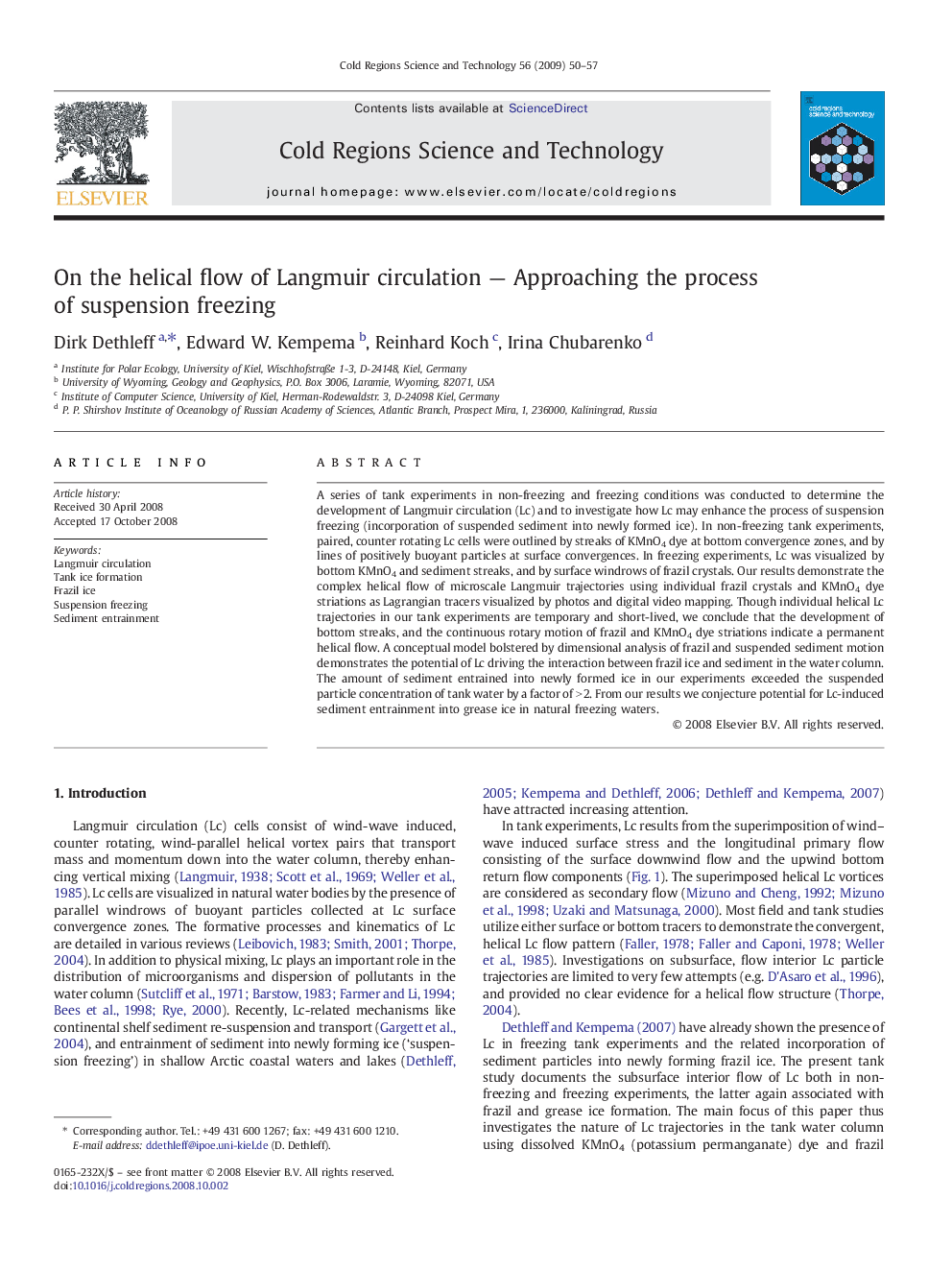| Article ID | Journal | Published Year | Pages | File Type |
|---|---|---|---|---|
| 4676542 | Cold Regions Science and Technology | 2009 | 8 Pages |
A series of tank experiments in non-freezing and freezing conditions was conducted to determine the development of Langmuir circulation (Lc) and to investigate how Lc may enhance the process of suspension freezing (incorporation of suspended sediment into newly formed ice). In non-freezing tank experiments, paired, counter rotating Lc cells were outlined by streaks of KMnO4 dye at bottom convergence zones, and by lines of positively buoyant particles at surface convergences. In freezing experiments, Lc was visualized by bottom KMnO4 and sediment streaks, and by surface windrows of frazil crystals. Our results demonstrate the complex helical flow of microscale Langmuir trajectories using individual frazil crystals and KMnO4 dye striations as Lagrangian tracers visualized by photos and digital video mapping. Though individual helical Lc trajectories in our tank experiments are temporary and short-lived, we conclude that the development of bottom streaks, and the continuous rotary motion of frazil and KMnO4 dye striations indicate a permanent helical flow. A conceptual model bolstered by dimensional analysis of frazil and suspended sediment motion demonstrates the potential of Lc driving the interaction between frazil ice and sediment in the water column. The amount of sediment entrained into newly formed ice in our experiments exceeded the suspended particle concentration of tank water by a factor of > 2. From our results we conjecture potential for Lc-induced sediment entrainment into grease ice in natural freezing waters.
